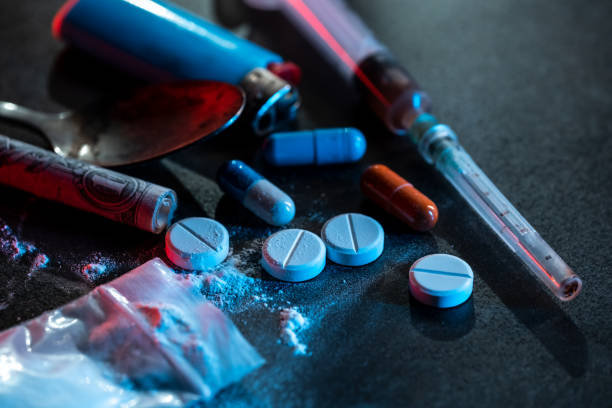Why Provigil (Modafinil) Is a Schedule IV Controlled Substance
Provigil, the brand name for modafinil, is a medication often prescribed to combat excessive sleepiness associated with conditions like narcolepsy, obstructive sleep apnea, and shift work disorder. Despite its therapeutic benefits, Provigil is classified as a Schedule IV controlled substance in the United States. This classification indicates a low but notable potential for abuse or dependence. Below, we explore why Provigil is in this category, what controlled substances are, and how its risk profile compares to other drugs.
Understanding Controlled Substances
Definition of Controlled Substances
Controlled substances are medications or drugs that primarily act on the central nervous system (CNS)—which includes the brain and spinal cord—and can lead to physical or mental dependence. Because of these risks, the U.S. government oversees their distribution through the Drug Enforcement Administration (DEA) and requires prescriptions for their use.
Overview of DEA Scheduling
The DEA classifies controlled substances into five schedules, each reflecting varying levels of abuse potential and medical usefulness:
- Schedule I:
- Highest risk of abuse
- No accepted medical use
- Examples: LSD, heroin, cannabis (though its classification remains controversial)
- Schedule II:
- High potential for abuse (though lower than Schedule I)
- Examples: codeine, fentanyl, morphine, methadone
- Schedule III:
- Lower abuse potential than Schedules I or II
- Examples: anabolic steroids, products containing limited amounts of codeine
- Schedule IV:
- Lower abuse potential than Schedules I–III
- Examples: Provigil (modafinil), certain benzodiazepines, sleep medications like zolpidem
- Schedule V:
- Lowest abuse potential among controlled substances
- Examples: certain cough medicines containing limited quantities of codeine
Provigil’s Classification and Its Rationale
Why Provigil (Modafinil) Is Schedule IV
Provigil carries a lower risk of abuse than many other controlled medications, yet it still has some potential for misuse or dependence. The Schedule IV designation means the drug can be prescribed for medical purposes but is considered to have some risk of causing addiction or drug-seeking behaviour, even if that risk is relatively small.
Documented Cases of Abuse or Dependence
Although rare, there are documented instances of individuals developing dependence on modafinil (the active ingredient in Provigil). For example:
- A 24-year-old in Turkey took high doses of modafinil for ADHD and experienced withdrawal symptoms when not taking the drug.
- A 44-year-old in India also developed dependence, alongside psychiatric symptoms, after prolonged modafinil use.
These cases, while unusual, underscore that misuse—taking the drug in higher doses or for reasons other than prescribed—can lead to harmful outcomes such as irritability, anxiety, sleep problems, fatigue, and vivid, unpleasant dreams.
Is Provigil a Stimulant or a Narcotic?
Provigil as a Nonamphetamine Stimulant
Provigil is considered a nonamphetamine stimulant. It boosts alertness by increasing CNS activity, though the exact mechanisms of action are not fully understood. This stimulation helps people stay awake and maintain focus, particularly those with sleep disorders.
Understanding the Term “Narcotic”
Provigil is not a narcotic. Narcotics are typically drugs that alter mood or behaviour and can be taken illicitly for nonmedical reasons, often leading to a high risk of abuse. Heroin is one of the most recognized examples of a narcotic. By contrast, Provigil’s classification and medical use set it apart from narcotics.
Potential Risks and Safe Usage
Risk of Dependence and Misuse
While Provigil has a low risk of dependence compared to higher-schedule drugs, it is crucial to use it only as prescribed. Misuse includes taking higher doses than prescribed or consuming it for nonmedical reasons. Doing so can increase the chance of unwanted side effects, dependence, or other complications.
Proper Storage and Disposal
To minimize risks associated with controlled substances:
- Keep Provigil in a secure, locked location, away from children and others.
- When no longer needed, use official disposal options like DEA Take Back Days or approved drop boxes at select pharmacies.
Key Takeaways
- Provigil (modafinil) is a Schedule IV controlled substance, meaning it has a low—but present—risk of abuse or dependence.
- Documented cases of modafinil misuse are rare but highlight the importance of taking the medication exactly as prescribed.
- Provigil is a nonamphetamine stimulant that enhances alertness and is not classified as a narcotic.
- Storing and disposing of Provigil safely helps prevent misuse and protects others from harm.
Conclusion
Provigil’s Schedule IV classification reflects its balance of effectiveness for treating excessive sleepiness with a relatively low potential for abuse. Although many individuals benefit from its alertness-enhancing effects, understanding the responsibility of its usage is vital. Consult a healthcare professional if you have questions about side effects, proper dosage, or concerns about dependence. By staying informed about Provigil’s risks and benefits, you can make more responsible choices and use this medication safely and effectively.








